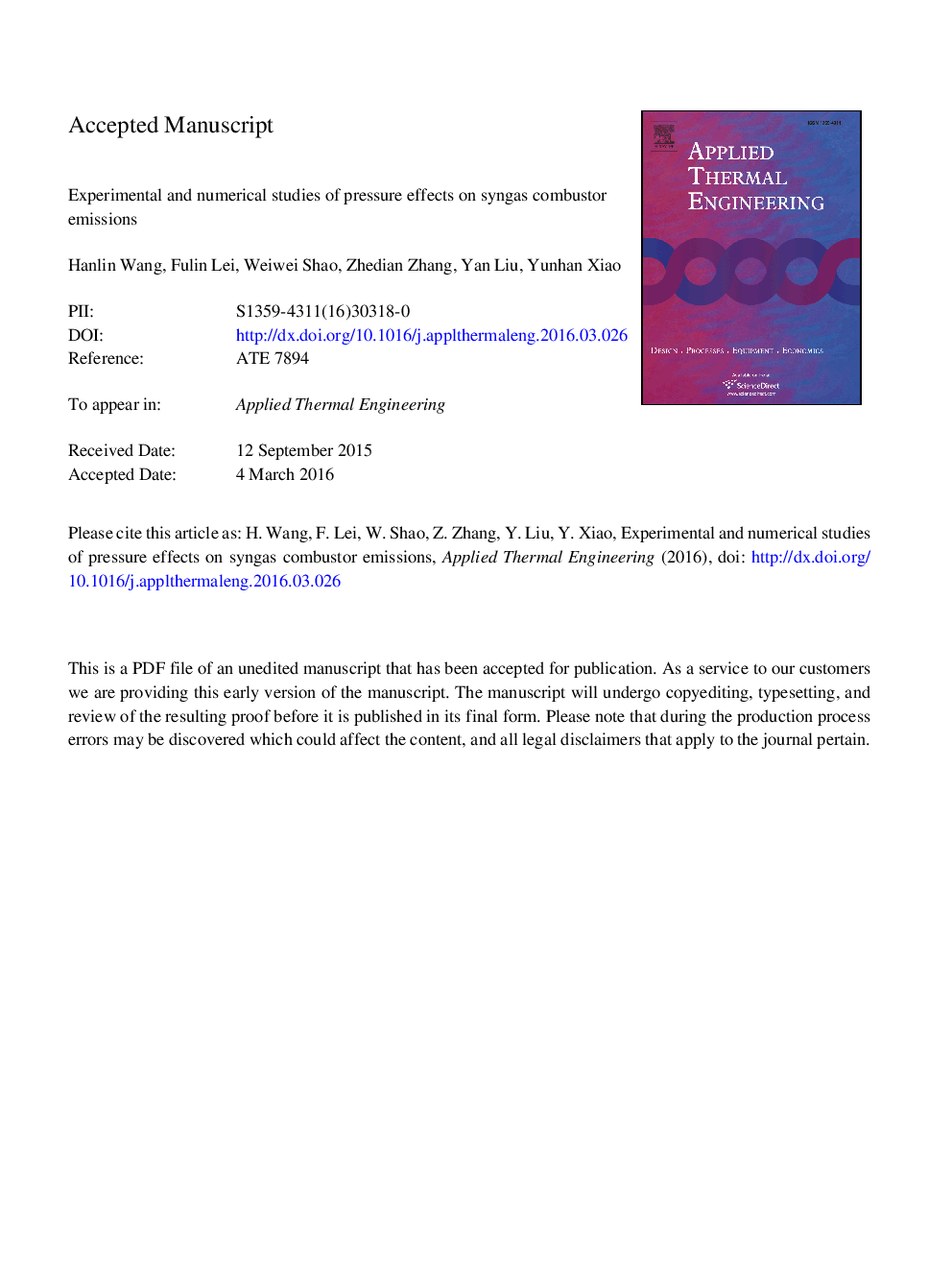| Article ID | Journal | Published Year | Pages | File Type |
|---|---|---|---|---|
| 7047955 | Applied Thermal Engineering | 2016 | 36 Pages |
Abstract
Pressure effects on NOx and CO emissions of a model syngas combustor were experimentally and numerically studied. The validated numerical method was employed to analyze pressure effects on the combustor emissions such as different mixing levels and extra reactant addition. The model combustor, fueled with 10Â MJ/NÂ m3 coal-derived syngas, was installed in a pressurized test-rig, and emissions were measured within 0.1-0.35Â MPa. Based on the flow, temperature and species fields calculated by the CFD method, a chemical reactor network (CRN) model was established. With a detailed chemical scheme, the emissions calculated by the CRN model agreed well with experimental results. The model was then employed to calculate emissions within pressure range from 0.1 to 2.0Â MPa, with the adiabatic flame temperature in the primary zone varied from 1477 to 2317Â K. The calculated NOx and CO emissions generally showed exponential relationship with the operating pressure, except that the NOx emission decreased at higher pressure when the primary adiabatic flame temperature was lower than 1800Â K. Through the analyses of the NOx formation pathways, it was found that the higher pressure would generally enhance the N2O pathway, which dominated NOx formation at low temperature, but NOx emission concentration through N2O pathway decreased with pressure above 1.0Â MPa at low temperature, which could explain the NOx emission behavior. The CRN modeling method was applied to analyze the effects of pressure on emission behaviors under the different mixing modes and with the extra reactant such as H2O and NH3 in fuel. Premixed and steam dilution burning modes showed better performance on reducing emissions at elevated pressures. NH3 could obviously increase the emission levels, especially at low pressure. Comprehensive understanding of the relationship between the emissions and the operating pressure in full pressure range was obtained, which could be valuable for the predicting and analyzing the syngas combustor pollutant emissions.
Keywords
Related Topics
Physical Sciences and Engineering
Chemical Engineering
Fluid Flow and Transfer Processes
Authors
Hanlin Wang, Fulin Lei, Weiwei Shao, Zhedian Zhang, Yan Liu, Yunhan Xiao,
